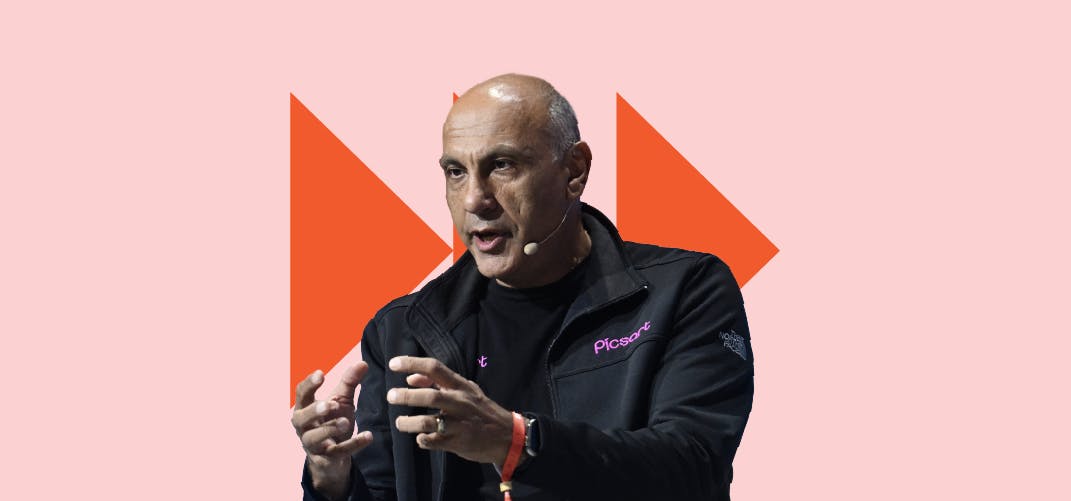
Artificial intelligence is here. Are you ready for it?

The artificial intelligence tide is rising and it appears to be bringing humanity with it, at least for now.
Collision 2023 brought together speakers from across the globe to discuss everything from harnessing the power of social media to sustainability in the tech industry. But one subject proved far more popular than the rest: AI.
With the increased popularity of generative AI tools like ChatGBT and Chatsonic, it’s no wonder that all anyone can talk about is the benefits and risks of integrating robotics into our daily lives.
Check out some of the AI-centred talks that took place at Collision 2023 from speakers including the ‘Godfather of AI’ Geoffrey Hinton, Conviction founder Sarah Guo and co-founder and Tessa Lau, CEO of Dusty Robotics .
How do we stop AI taking over?
Of all the risks that AI poses to humanity, the most overlooked is existential risk – the risk that AI could lead to human extinction. That’s according to cognitive psychologist and computer scientist Geoffrey Hinton, who is often referred to as the Godfather of AI.
Although other risks – such as bias, misinformation and job losses – are current concerns, the former Google researcher warned that we may not be prepared for super intelligent machines motivated to take control of humanity in the near future.
“Before it’s smarter than us, I think the people developing it should be encouraged to put a lot of work into understanding how it might go wrong … and I think the government could maybe encourage the big companies developing it to put comparable resources [into this],” said Geoffrey.
With the possibility that AI could reach super intelligence, the computer scientist advised researchers and companies in this space to “do empirical work into how it goes wrong, how it tries to get control, whether it tries to get control”.
“Right now there’s 99 very smart people trying to make [AI] better and one very smart person trying to figure out how to stop it from taking over. And maybe you want it more balanced.”
Existential risk v regulatory capture
Does humanity have to fear the potential of AI? Perhaps not as much as some may lead you to believe.
“Everyone is aligned on taking this forward in the most thoughtful and responsible way … There will be human decision makers on the most critical tasks,” said investor Elad Gil.
“Lots of calls for rapid regulation of new industry are really about regulatory capture.”
–Sarah Guo, Founder of Conviction
Michael Isikoff of Yahoo News raised the subject of a recent letter signed by 33,000 people, including leading tech figures, calling for a pause in AI research and development that represents “a profound change in the history of life on earth”.
“I think [AI] will represent a profound change,” said Conviction founder Sarah Guo, even while being critical of the letter itself and the motivation behind it. “The letter is about existential risk and, in my opinion, lots of calls for rapid regulation of new industry are really about regulatory capture.”
In other words, according to Sarah, AI founders are over-hyping the dangers of their own technology to take a hand in its regulation.
I, for one, welcome our AI job overlords
Recently, IBM put a freeze on hiring for about 7,800 jobs it thinks will be automated in the near future. CNET, Gizmodo and BuzzFeed are already dabbling in AI content. This is only the beginning, says Joshua Wöhle, CEO of learning platform Mindstone.
The World Economic Forum recently published The Future of Jobs Report 2023, in which respondents across 45 geographic regions predicted that 42 percent of business tasks will be automated by 2027. The largest losses are expected in administrative roles such as cashiers, data entry and accounting.
“That’s four years from now. We’re talking about almost half of the skills that we would use in a business context,” warns Joshua.
“We’re seeing more and more of these vertical AIs that are starting to automate parts of our job – creating a marketing strategy, writing technical documentation, even creating a legal argument.”
Joshua pointed out that, beyond the 200-plus AI APIs that currently exist, there are thousands of startups busy usings these APIs to build their own solutions, ”each one of them trying to attack different functions; different tasks in our respective roles”.
“The amount of automation that you’re going to be looking at in the next six months, or two years or so, is an order of magnitude bigger.”
Move fast and break robots? The challenge of autonomous machines
Perhaps one of the reasons we’re seeing AI software making strides ahead of robotics is down to the relative ease of getting AI to a minimum viable product. It’s difficult to get robots working well and working safely, said Attabotics co-founder Scott Gravelle.
“What we found, in developing our system, is that you can create a lot of different test environments, but you can’t push the pause button on gravity,” quipped Scott.
“That idea of ‘break shit fast’ has a new kind of quantum when it’s a really loud noise in the shop … You’ve got to be willing to make some sparks in your lab.”
Tessa Lau, co-founder and CEO of Dusty Robotics, a company making robots for the construction sector, agreed. Tessa said that, when it comes to moving fast and breaking things, you try to move fast but don’t have the luxury of breaking things – or you have to at least make sure to break things early on and work out the kinks before they get to the customer.
Another challenge in modern robotics is anticipating how much autonomy the end user might want. While Tessa’s robots are semi-autonomous, the company had considered full autonomy until the feedback from those working with the robots suggested it wasn’t a great idea.
“Construction people are way smarter than robots are ever going to be. They know what their site looks like; they know what the constraints are; they’re coordinating with all the other people on some of the most congested sites I’ve been on,” explained Tessa.
“When the site is that congested, you can’t just set a robot down and have it do its thing. It’s a really complex problem of negotiation, coordination, collaboration – and that’s where the people come in.”
Collision returns to Toronto in 2024 from June 17-20. Pre-register for tickets now.
Main image of Godfather of AI Geoffrey Hintin on centre stage at Collision 2023: Ramsey Cardy/Web Summit (CC BY 2.0)
